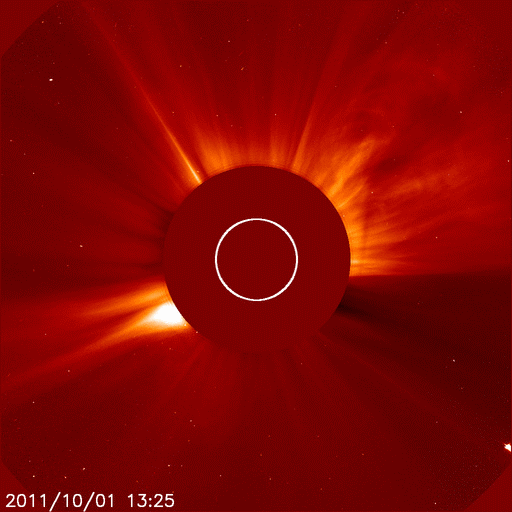The coma of the comet was bigger than the earth (although the nucleus was certainly much less massive) and its tail stretched for several million miles. The comet streaked towards the sun at terrific speeds indicating a large, eccentric orbit. Further analysis of the comet’s motion shows an apparent slowdown as the comet neared the sun. In actuality, the comet continued to speed up as it swung around the sun, but did not quite clear the solar disk and smacked the sun on the far side, triggering the CME that erupted on the opposite side from the comet’s apparent approach in the animated GIF.
While some, like the bloggers at SpaceWeather, have expressed surprise in seeing the associated CME, this is not the first time that a comet has triggered a coronal mass ejection. A much smaller impact event occurred last May and can be seen in the YouTube video on our site here. Another similar collision that resulted in a more ambiguous CME can be seen on our site here.
Conventional astronomical theories cannot account for the violent solar reactions to these two impacts because neither body had sufficient mass or speed to violently blast significant amounts of ejecta millions of miles away from the sun’s surface. However, proponents of the Electric Universe predicted such behavior. According to them, comets are like giant capacitors that become highly electrically charged due to their eccentric orbits around the sun. When they plunge through the inner solar system, the dense solar winds trigger plasma discharges resulting in the tail and coma of the comet. If there is any truth to this idea, it is easy to imagine how a comet impact could disrupt the local magnetic field of the sun and result in a CME.
